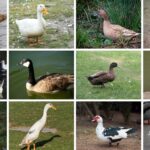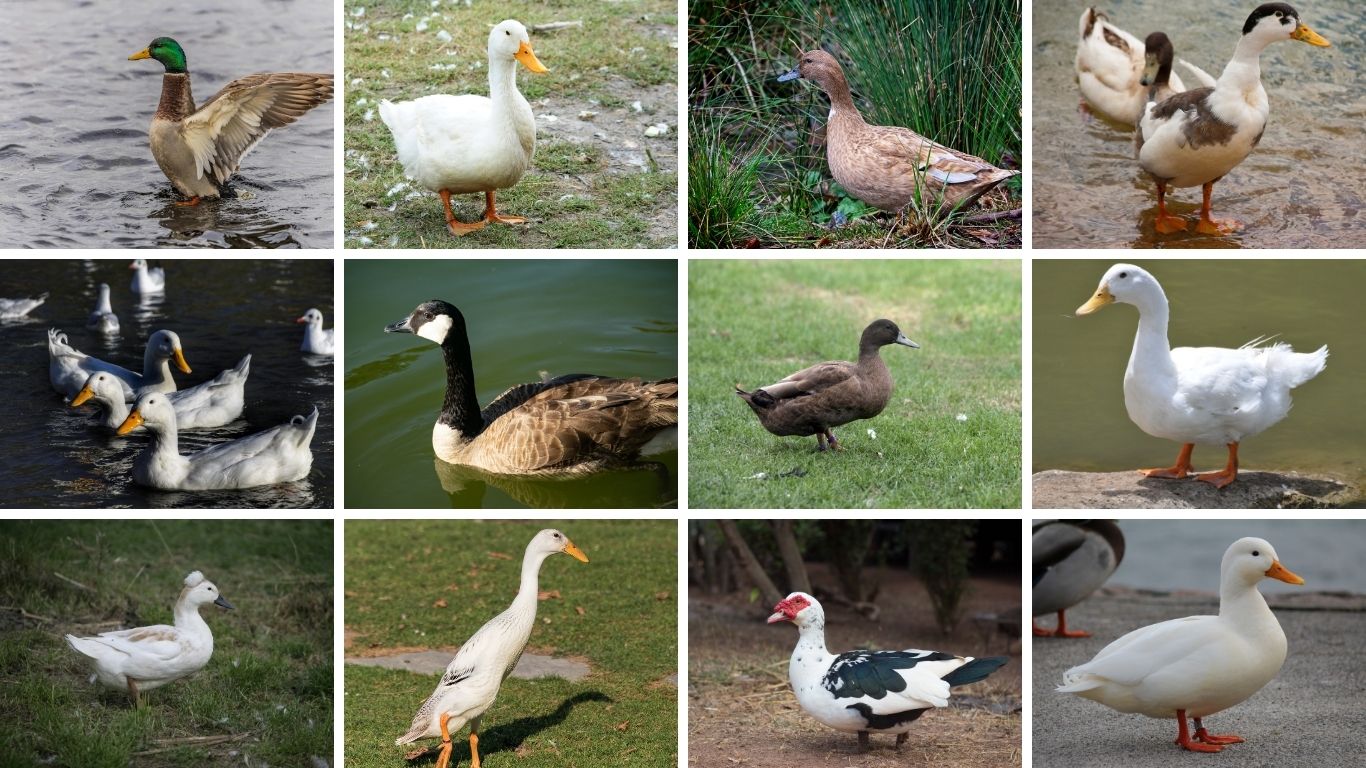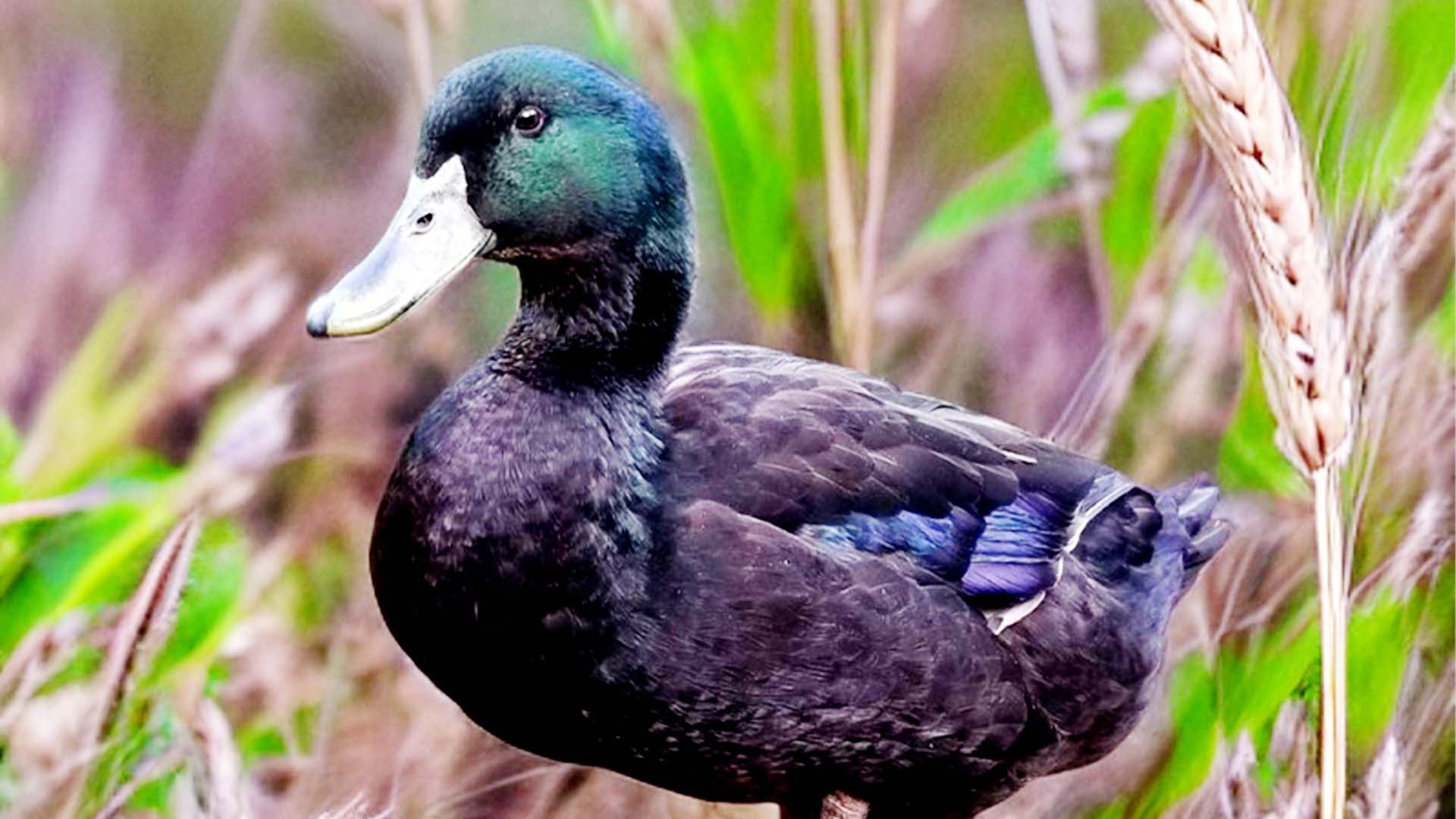White ducks are not only eye-catching but also come in a wide range of breeds, each with its own charm, purpose, and personality. From the popular American Pekin to the adorable White Call Duck, this list highlights 15 white duck breeds you should know. Whether you’re raising ducks for eggs, meat, or companionship, there’s a perfect white duck for every flock.
1. American Pekin
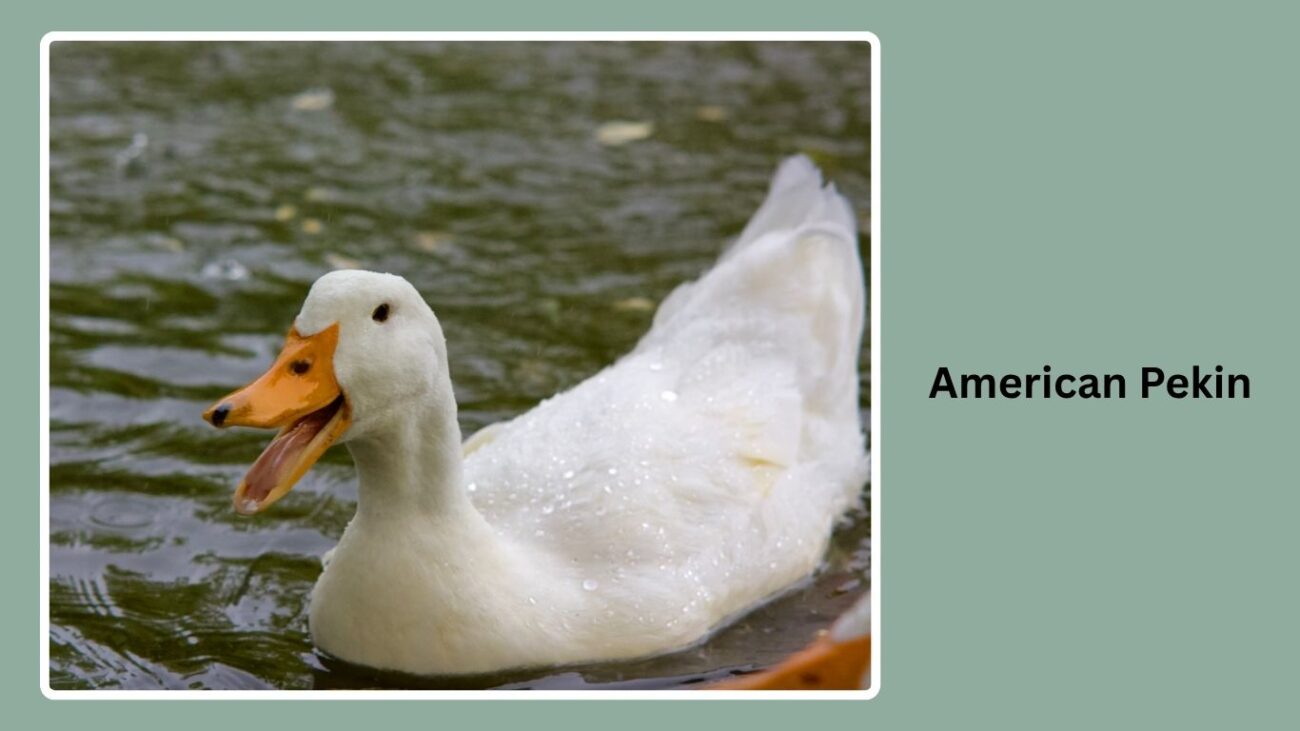
The American Pekin is a widely recognized duck breed in the U.S., especially valued for its fast growth, white plumage, and meat quality. It is the most common commercial meat duck in North America.
Identification
- Pure white feathers
- Orange bill and legs
- Large, heavy body
- Horizontal posture
- Calm and friendly nature
Origin
Originated in China and brought to the U.S. in the 19th century, it was selectively bred for rapid growth and meat production.
Purpose
Primarily raised for meat, but also kept in backyard farms for its easygoing temperament.
Behavior
Docile, social, and easy to manage. They are poor fliers and prefer staying close to their flock or enclosure.
2. German Pekin
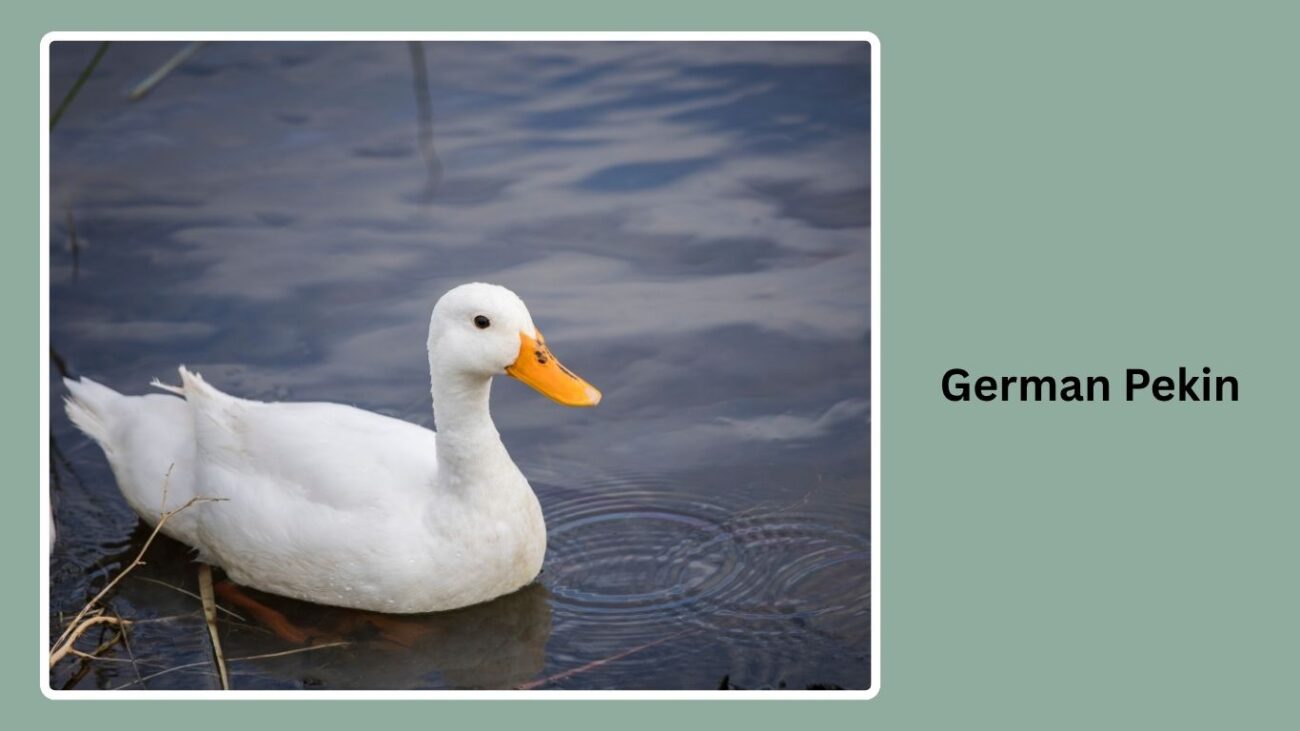
The German Pekin is a European variant of the Pekin duck, developed in Germany with a focus on a more upright posture and refined appearance. It is often used for exhibition and small-scale farming.
Identification
- White plumage
- Orange bill and legs
- More upright stance
- Leaner body than American Pekin
- Active and alert behavior
Origin
Developed in Germany from Chinese stock, this breed diverged from the American type through selective breeding for posture and activity.
Purpose
Raised for both ornamental purposes and meat in some European regions.
Behavior
More active and agile than the American strain. Suitable for free-range environments and exhibitions.
3. White Call Duck

The White Call Duck is a small, ornamental breed known for its compact size and loud, high-pitched call. It’s especially popular in shows and as a pet due to its adorable appearance.
Identification
- Snow-white plumage
- Short orange bill and legs
- Round, compact body
- Small size (1.5–2 lbs)
- Large, dark eyes
Origin
Originally developed in the Netherlands as a decoy duck to lure wild ducks into traps. The white variety became popular among breeders and hobbyists.
Purpose
Primarily used for exhibition and as pets. Not suitable for meat or significant egg production.
Behavior
Friendly and vocal. They enjoy human interaction and do well in small flocks or as part of backyard setups.
4. White Muscovy Duck
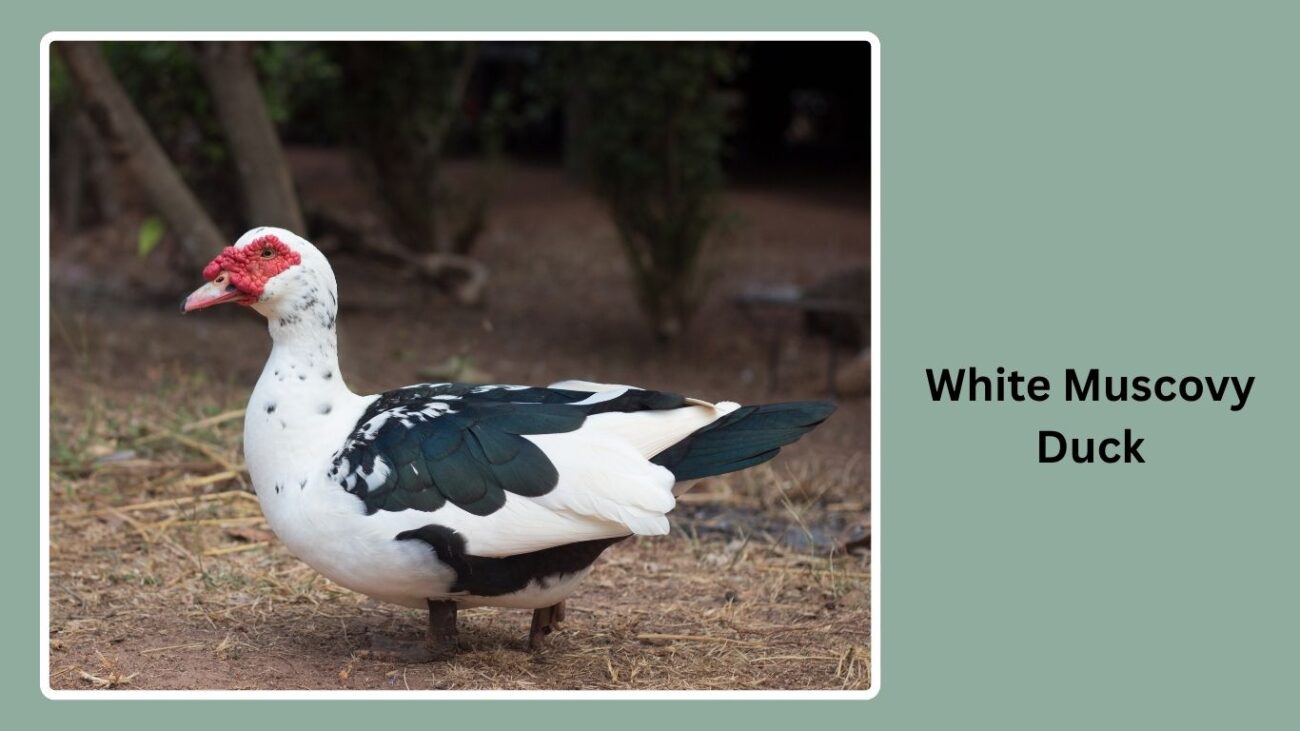
The White Muscovy is a color variant of the Muscovy duck, known for its unique appearance and lean, flavorful meat. Unlike most domestic ducks, it is not descended from the Mallard.
Identification
- All-white feathers
- Pinkish-red facial caruncles
- Long body and broad wings
- Clawed feet for perching
- Silent or low-hissing sounds (not vocal quackers)
Origin
Native to Central and South America. The white variety was selectively bred from wild Muscovies for domestic use.
Purpose
Popular for meat production due to its lean, less greasy meat. Also used for ornamental purposes.
Behavior
Quiet, calm, and often independent. Muscovies can fly if not clipped and enjoy roosting.
5. White Indian Runner
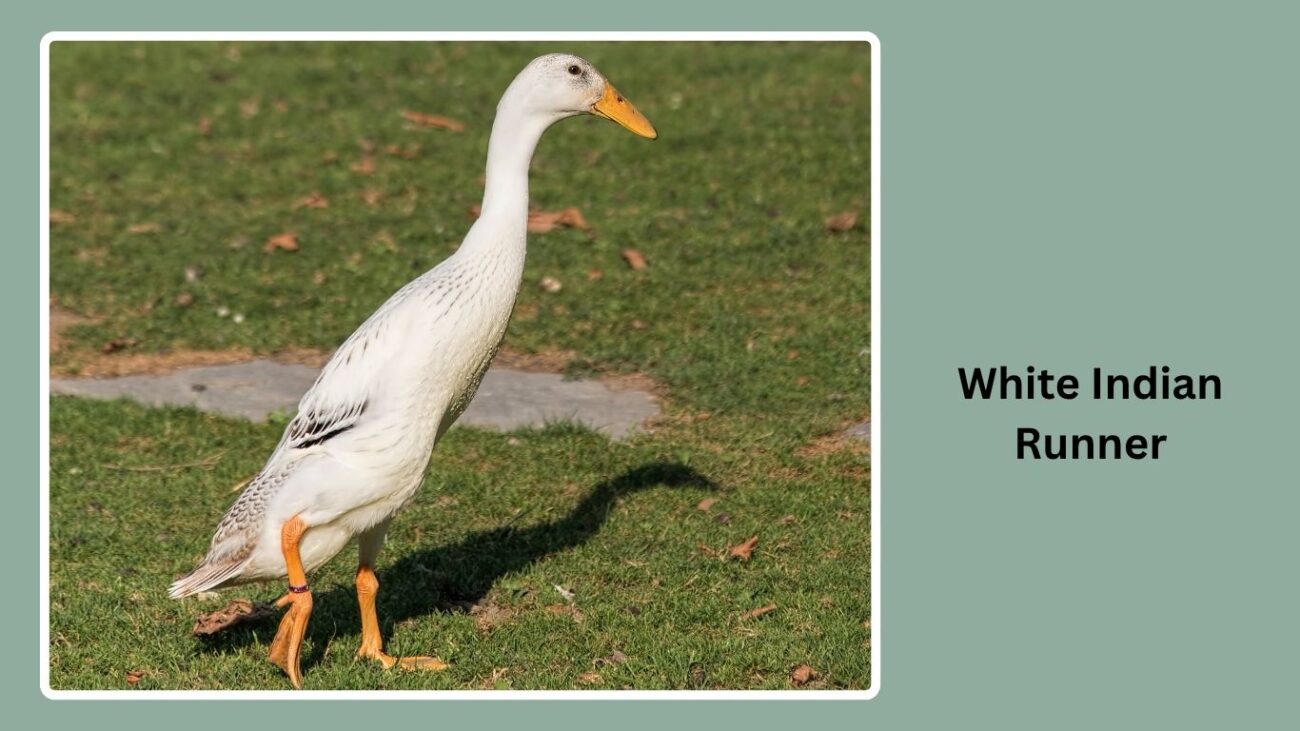
The White Indian Runner is a slender, upright duck known for its unique, penguin-like posture and excellent foraging abilities. Unlike most ducks, it runs more than it waddles.
Identification
- White, sleek feathers
- Tall, upright stance
- Long neck and slim body
- Orange bill and legs
- Lightweight and agile
Origin
Originated in Southeast Asia and was brought to Europe in the 1800s. The white variety was developed through selective breeding for show and utility purposes.
Purpose
Primarily used for egg production, as Runner ducks can lay 250–300 eggs per year. Also valued for pest control in gardens and rice fields.
Behavior
Very active and fast-moving. They are social, excellent foragers, and love to explore—best suited for free-range environments.
6. White Crested Duck
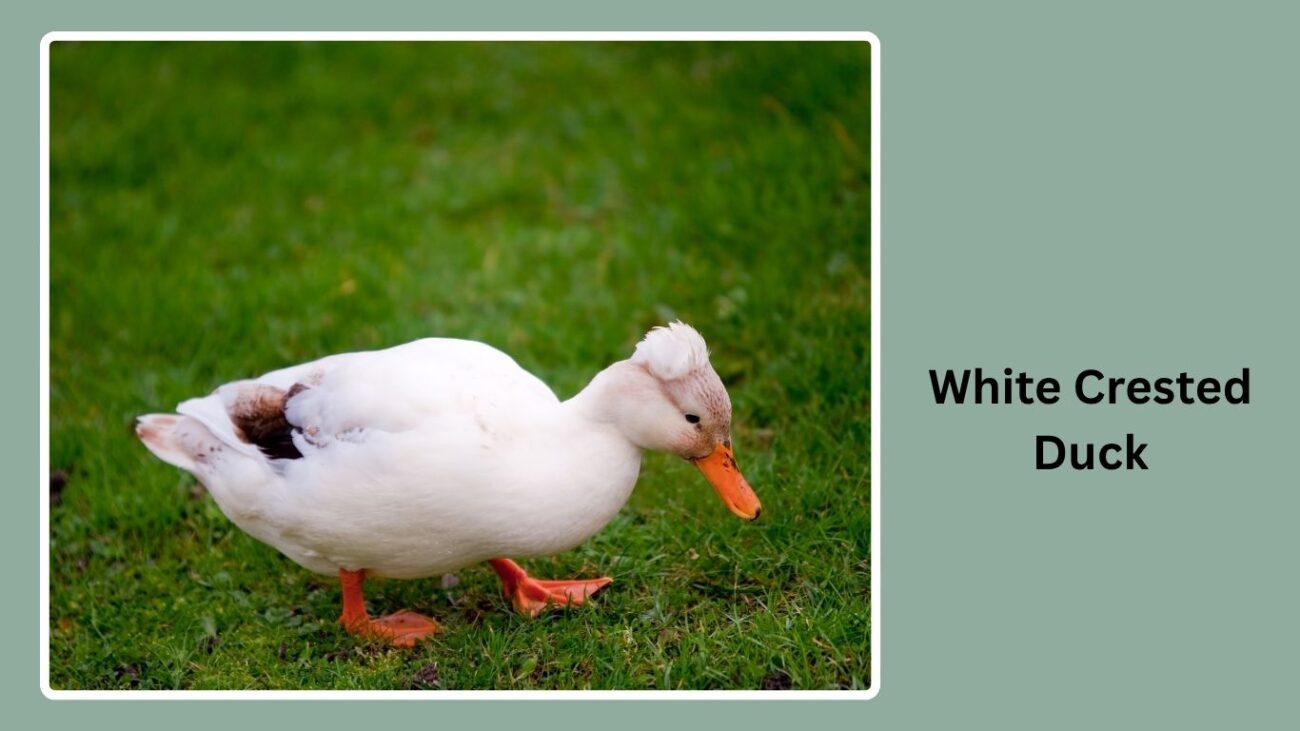
The White Crested Duck is a striking ornamental breed, easily recognized by the fluffy crest of feathers on top of its head. It’s both beautiful and quirky, making it a favorite for backyard flocks and poultry shows.
Identification
- Pure white plumage
- Distinct feathered crest on the head
- Orange beak and legs
- Medium-sized, rounded body
- Slightly waddling gait
Origin
Believed to have originated in Europe centuries ago. The crest is caused by a genetic mutation that has been preserved through selective breeding.
Purpose
Primarily used for ornamental purposes and exhibitions. While they can lay eggs, they are not typically used for high-yield egg production or meat.
Behavior
Friendly but can be shy. Due to their crest, they require some protection from injury and should be handled gently.
7. White Saxony Duck
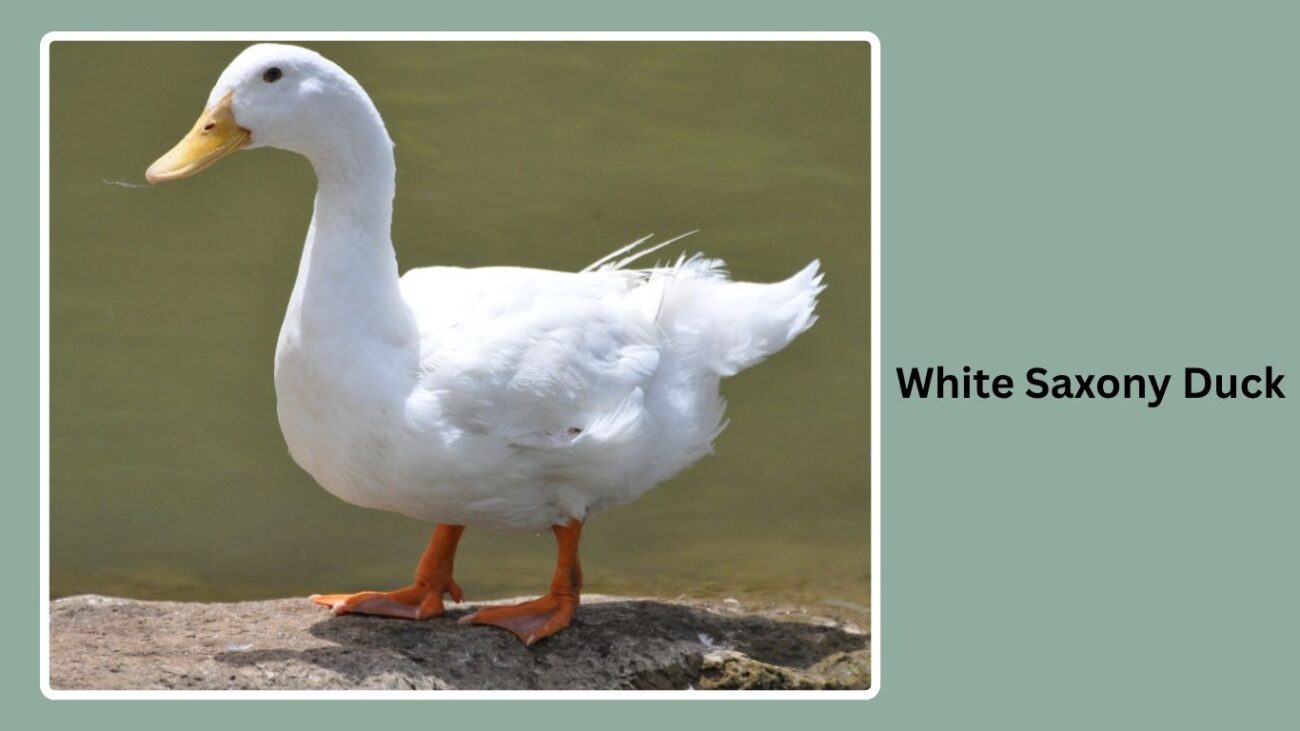
The White Saxony is a rare color variant of the standard Saxony duck. While the original Saxony has a buff-blue coloration, the white version is bred specifically for its clean, uniform appearance and show quality.
Identification
- White feathers
- Orange bill and legs
- Sturdy, broad body
- Rounded head and neck
- Medium to large size
Origin
Originally developed in Germany in the 1930s, the Saxony duck was bred by crossing German Pekins, Rouens, and Blue Pommeranians. The white strain came later through selective breeding.
Purpose
Used for both meat and eggs, with a calm nature that also makes it suitable for ornamental use.
Behavior
Docile, friendly, and good with children. They adapt well to backyard environments and mixed flocks.
8. White Khaki Campbell
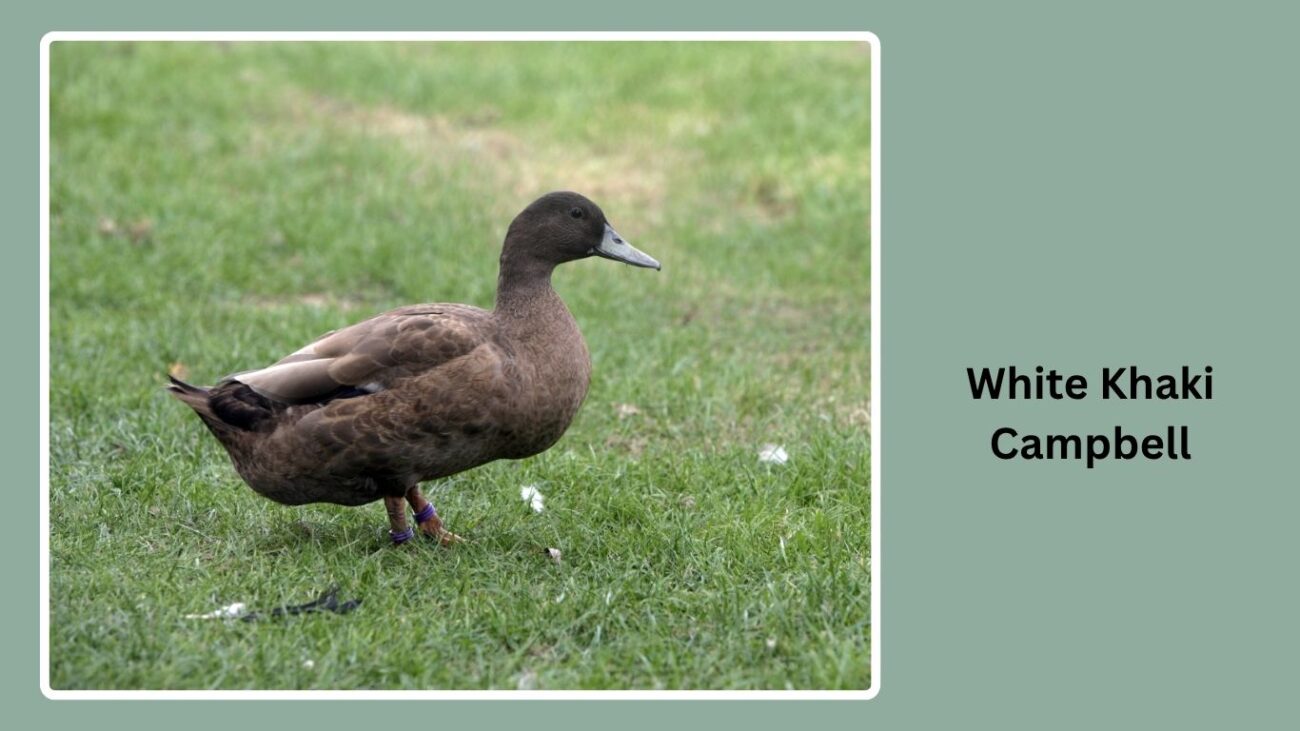
The White Khaki Campbell is a color variation of the well-known Khaki Campbell, bred to maintain the same productivity with a pure white plumage. It’s an excellent egg-laying duck with a sleek body and active behavior.
Identification
- Bright white plumage
- Slim, upright body
- Orange bill and feet
- Lighter frame than meat ducks
- Sharp, alert expression
Origin
The Khaki Campbell was developed in England in the early 1900s. The white variant was selectively bred for aesthetics while keeping the same prolific laying traits.
Purpose
Primarily used for egg production—laying up to 300 eggs per year. The white color makes them popular for backyard keepers and hobby farms.
Behavior
Energetic, independent, and good foragers. They are slightly shy but settle well in calm environments.
9. White Appleyard

The White Appleyard is a less common color variant of the Silver Appleyard, developed for both utility and appearance. It retains the breed’s well-rounded body and productive nature, but with a striking all-white look.
Identification
- Bright white feathers
- Deep, broad body
- Orange bill and legs
- Medium to large size
- Compact, balanced posture
Origin
Originally developed in England by Reginald Appleyard in the 1940s. The white version was later refined through selective breeding for aesthetic purposes.
Purpose
Dual-purpose breed—used for both meat and eggs. Also popular in exhibitions due to its attractive appearance.
Behavior
Calm, gentle, and sociable. They do well in backyard flocks and enjoy free-ranging.
10. White Aylesbury
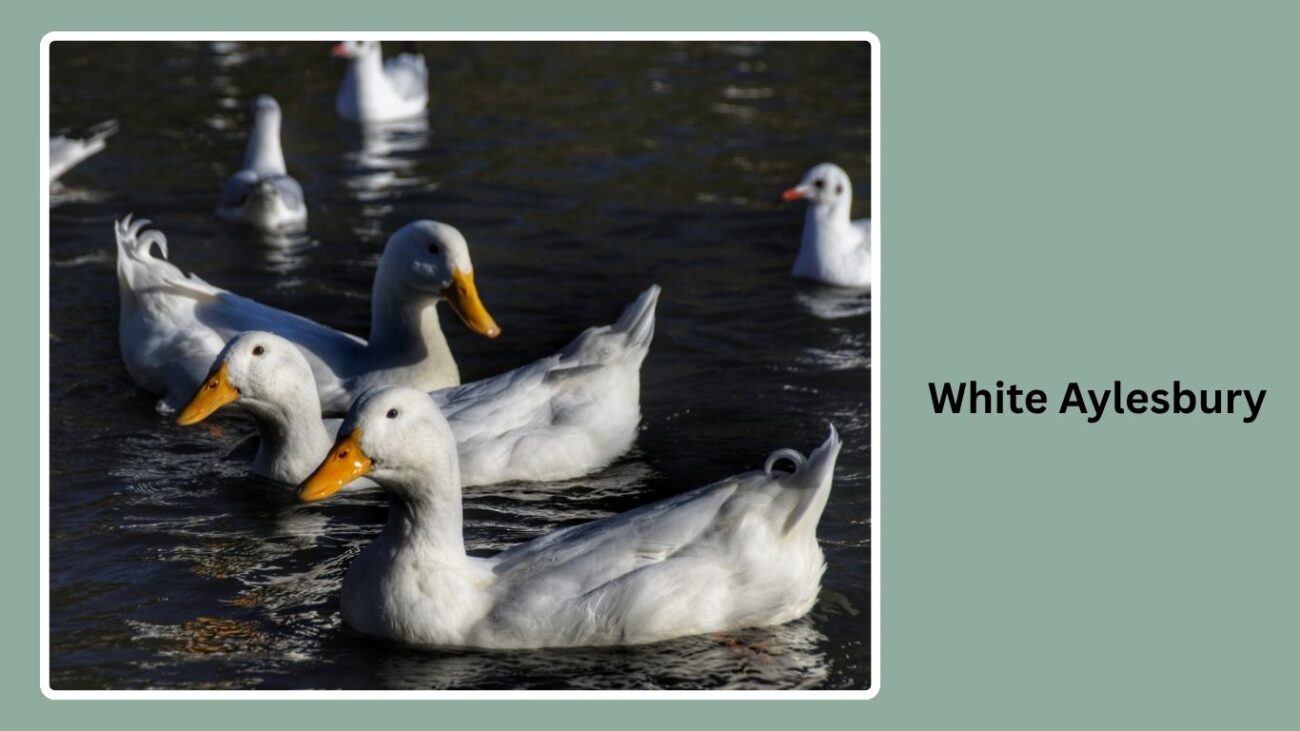
The White Aylesbury is an old and classic meat duck breed known for its white plumage, pinkish beak, and flavorful meat. It was once the preferred table duck in England before being overtaken by the American Pekin in popularity.
Identification
- Pure white feathers
- Pink bill (a key distinguishing trait)
- Orange legs
- Heavy, deep body
- Broad breast and flat back
Origin
Originated in Aylesbury, England, during the 18th century. It became famous for its quality meat and was widely farmed in the UK.
Purpose
Primarily bred for meat. It has tender flesh and a rich flavor, making it highly valued by chefs and poultry keepers.
Behavior
Docile and quiet. They are not very active and prefer calm, secure environments. Require dry bedding due to their low posture and weight.
11. White Cherry Valley
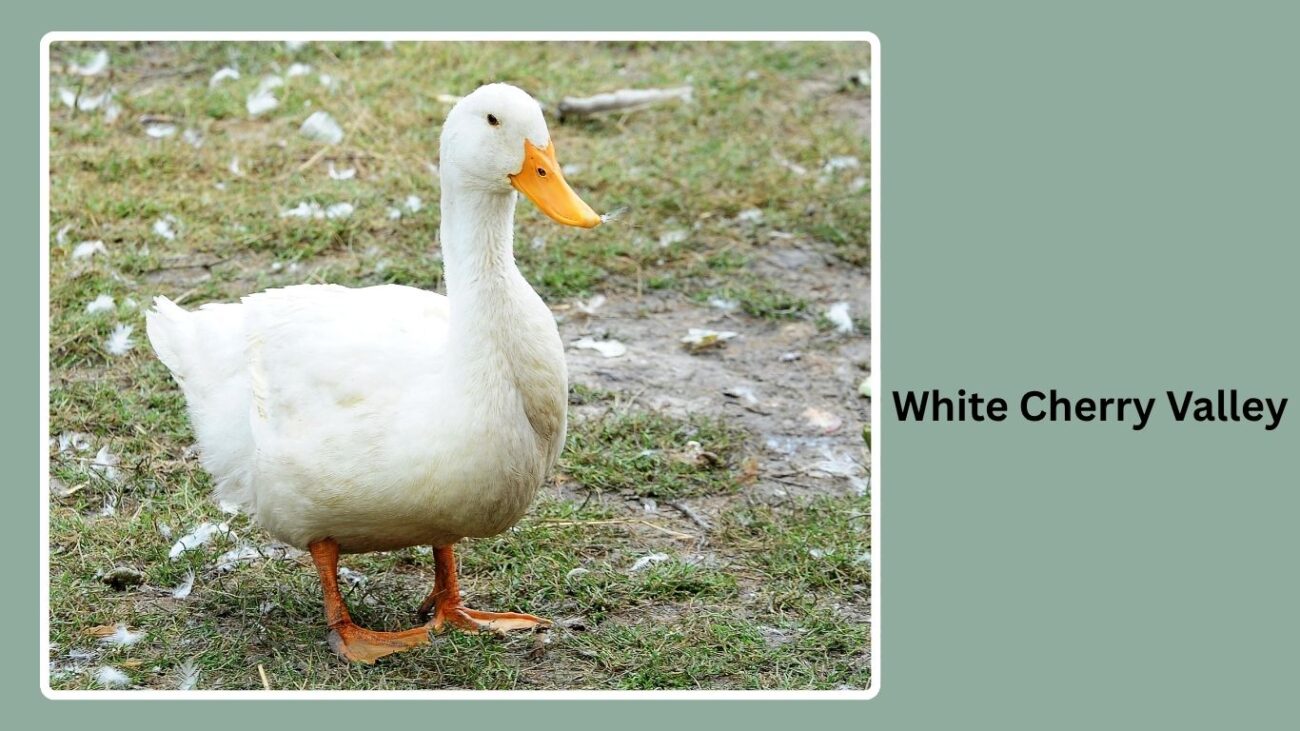
The White Cherry Valley is a commercial hybrid duck breed developed in the UK. It is one of the leading meat-producing ducks in Europe, bred for rapid growth, high meat yield, and white plumage.
Identification
- Bright white feathers
- Orange bill and feet
- Broad, heavy body
- Thick neck and rounded chest
- Medium-short legs
Origin
Developed in Cherry Valley Farms, England, in the 20th century. It was bred from Pekin stock and refined for commercial meat production.
Purpose
Primarily raised for meat, especially in large-scale duck farming. Known for its fast growth and efficient feed conversion.
Behavior
Quiet and easy to manage. These ducks are typically raised in controlled farming environments but are docile enough for backyard settings too.
12. White Magpie Duck
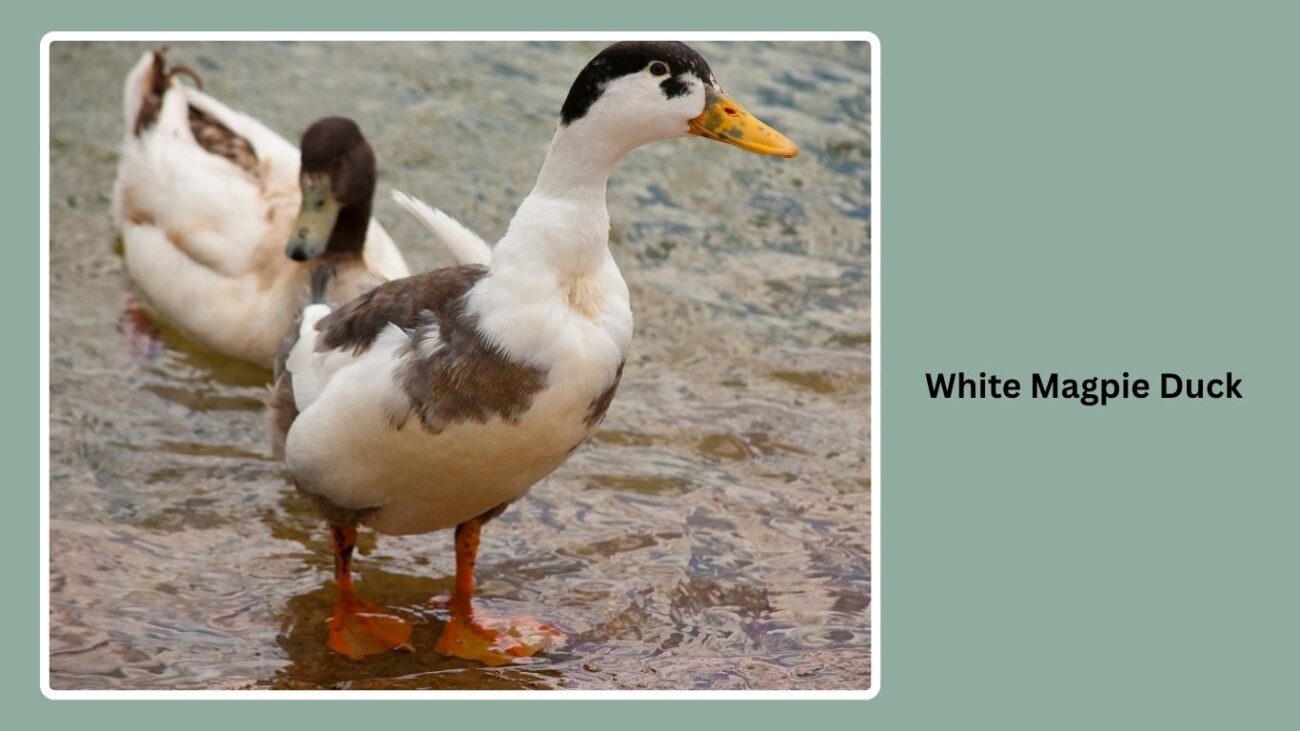
The White Magpie is a rare color mutation of the standard Magpie duck. While the typical Magpie has black and white markings, this variant features entirely white plumage, creating a clean and uniform appearance.
Identification
- All-white feathers
- Upright body stance
- Orange legs and bill
- Medium-sized frame
- Long, slightly curved neck
Origin
The Magpie duck was developed in the UK in the early 1900s. The white color variant emerged later through selective breeding.
Purpose
Kept for both eggs and ornamental value. Though not a major meat breed, it performs well as a backyard egg-layer and show bird.
Behavior
Active, curious, and friendly. They enjoy foraging and are good in free-range conditions.
13. White Buff Duck
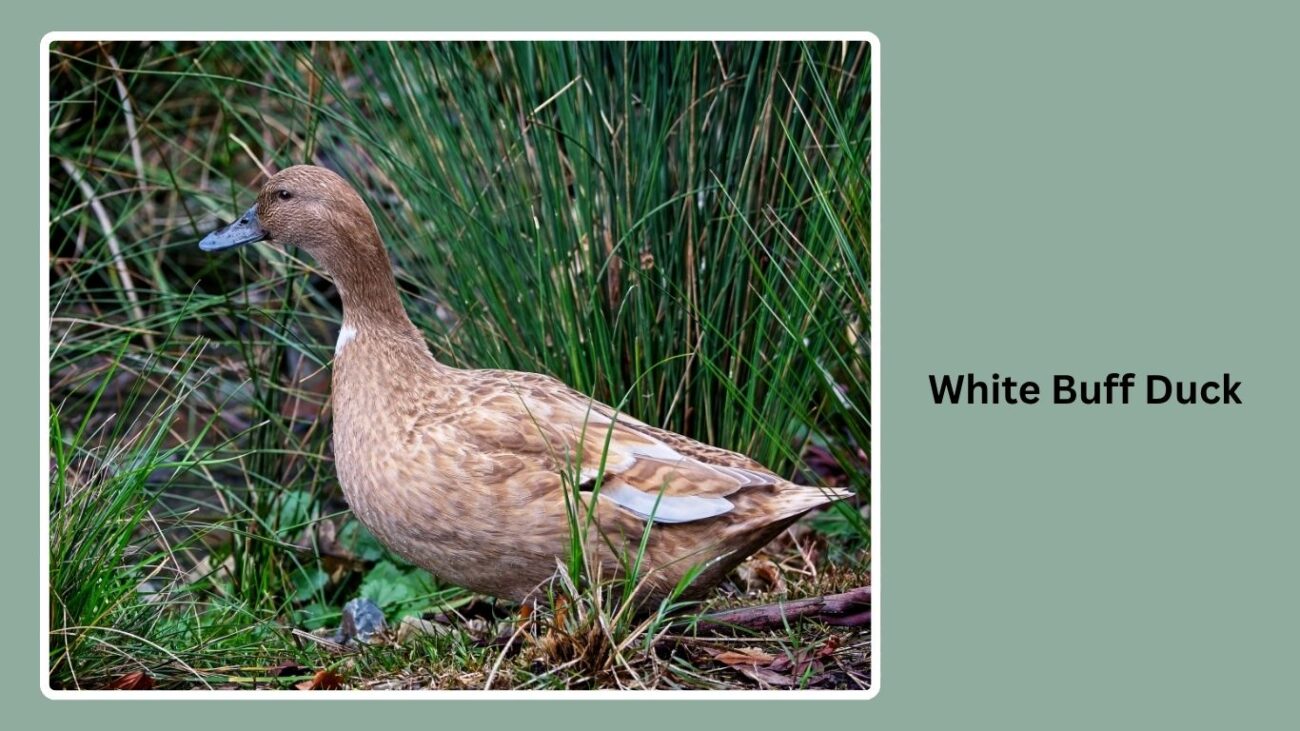
The White Buff is a color variant of the Buff Orpington duck, selectively bred for its uniform white feathers while retaining the same calm temperament and good egg-laying traits.
Identification
- Pure white plumage
- Orange bill and legs
- Medium-sized, rounded body
- Upright stance
- Soft, dense feathers
Origin
The original Buff duck was developed in the UK in the late 1800s. The white variety was created by selecting Buffs with recessive white genes for several generations.
Purpose
Dual-purpose: suitable for both meat and eggs. Also kept for ornamental reasons due to its gentle personality and neat appearance.
Behavior
Very calm, friendly, and easy to handle—ideal for beginners and backyard flocks.
14. White Rouen
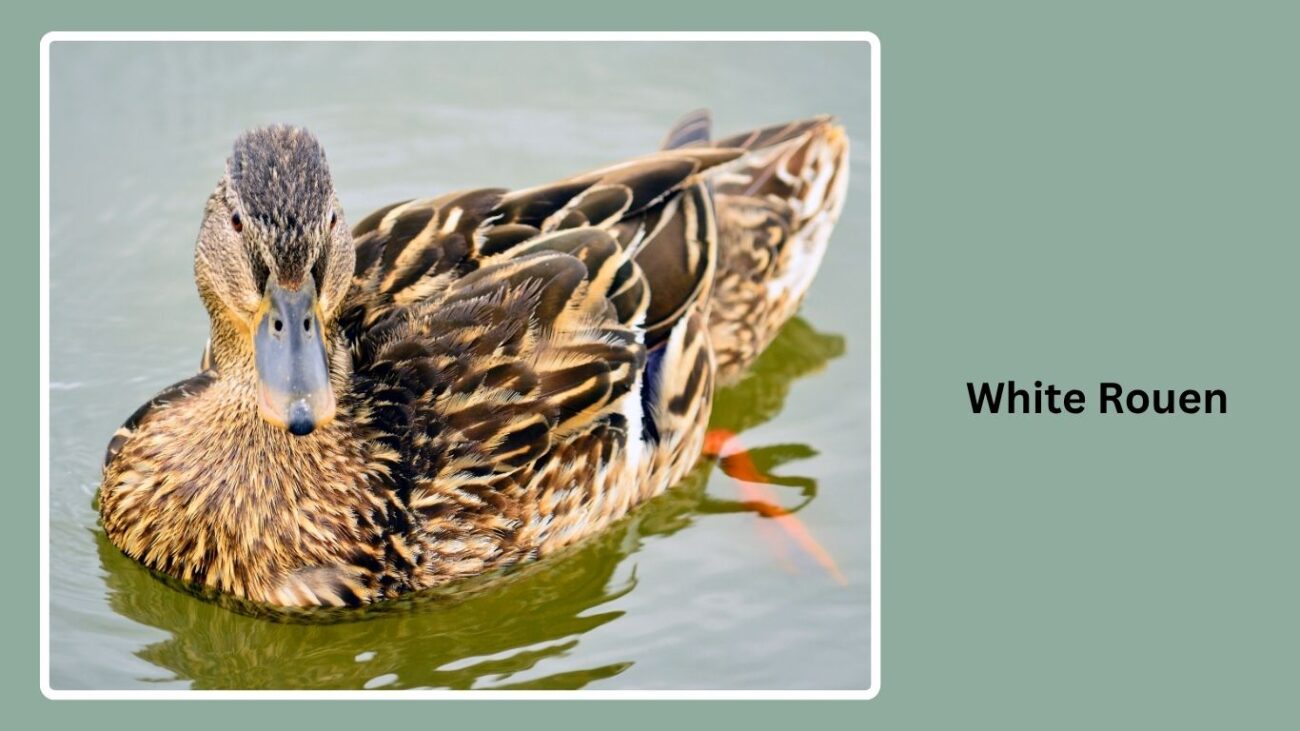
The White Rouen is a rare and unique color variant of the standard Rouen duck, which is typically known for its Mallard-like coloring. The white version retains the large, heavy frame but has solid white plumage.
Identification
- All-white feathers
- Heavy, broad body
- Large, deep breast
- Orange bill and legs
- Slightly arched back
Origin
The Rouen duck originated in France and was later bred in the UK and U.S. for meat. The white version was developed through selective breeding for exhibition or visual preference.
Purpose
Primarily for meat, but also shown in exhibitions due to its size and elegance.
Behavior
Quiet, calm, and slow-moving. Not ideal for flight; prefers ground roaming and needs a spacious pen.
15. White Swedish Duck
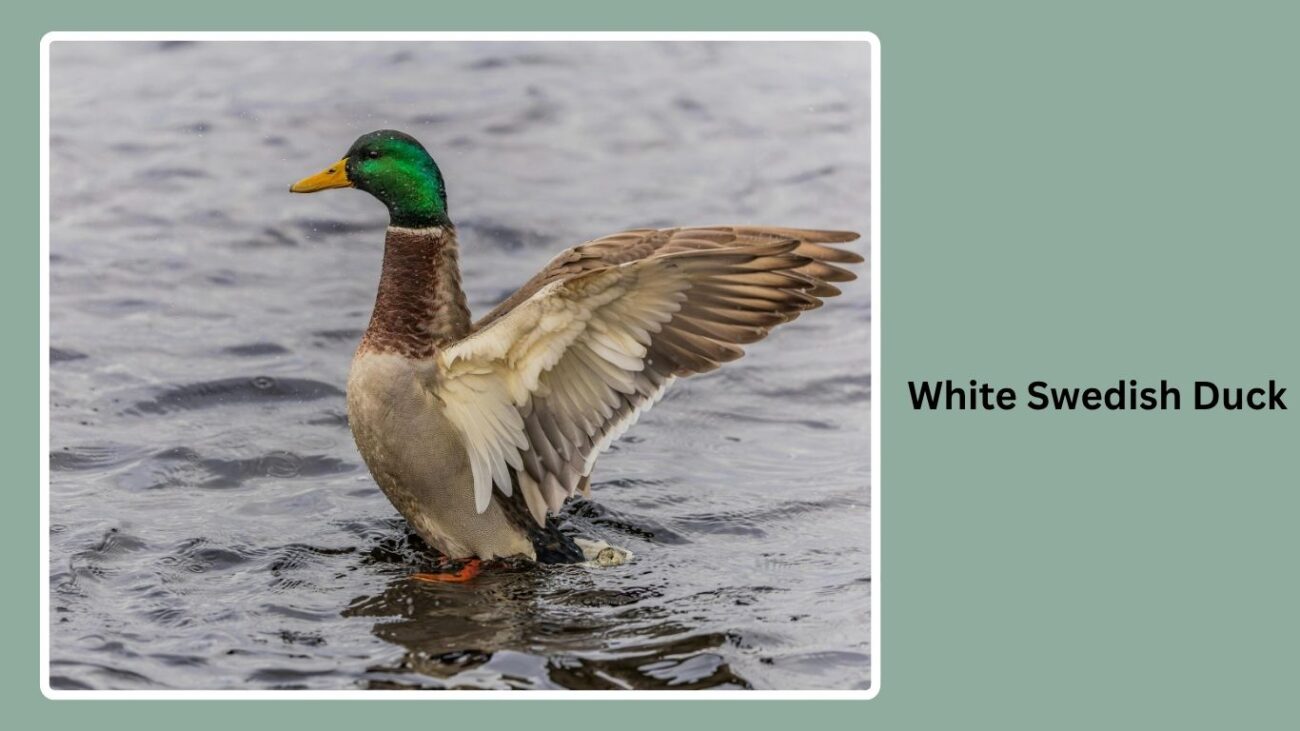
The White Swedish is a color variant of the Blue Swedish duck. While the original breed features a slate-blue body with white markings, this version is entirely white and less commonly found.
Identification
- Solid white plumage
- Orange bill and legs
- Medium build with a broad body
- Slightly arched back
- Calm facial expression
Origin
The Swedish duck originated in Sweden in the 1800s. The white strain was developed later by selectively breeding individuals that carried the recessive white gene.
Purpose
Used for both meat and egg production. Also kept for ornamental purposes due to its clean appearance and gentle disposition.
Behavior
Hardy, quiet, and easygoing. They are excellent foragers and do well in both backyard and farm environments.
FAQs
Are all white ducks the same breed?
No, not all white ducks belong to the same breed. Many breeds like Pekin, Aylesbury, Muscovy, and Indian Runner have white varieties, each with different sizes, purposes, and temperaments.
Which white duck breed is best for meat production?
The American Pekin and Jumbo Pekin are the most popular white duck breeds for meat due to their rapid growth, large size, and tender meat.
Do white ducks lay eggs well?
Yes, some white ducks like the White Khaki Campbell and White Indian Runner are excellent layers, producing 250–300 eggs per year, while others like Pekins lay moderately.
Are white ducks more prone to predators?
Yes, white ducks are more visible in natural surroundings, which can make them more vulnerable to predators, especially in free-range settings.
Can white ducks be kept as pets?
Absolutely. Breeds like White Call Ducks, White Crested Ducks, and White Swedish are calm, friendly, and well-suited as pets or ornamental birds.



